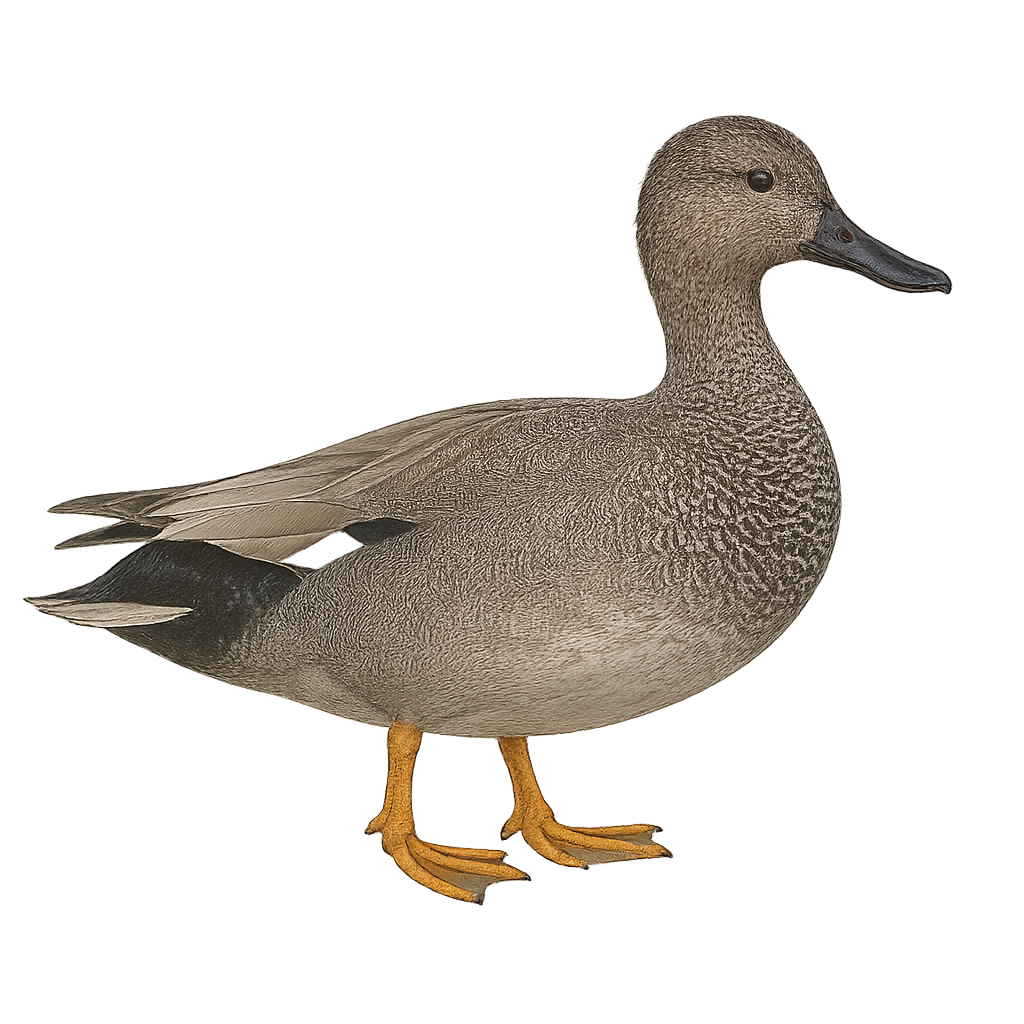Your wildlife photography guide.
Explore the gadwall in detail, study its behavior, prepare your shots.
Where to observe and photograph the gadwall in the wild
Learn where and when to spot the gadwall in the wild, how to identify the species based on distinctive features, and what natural environments it inhabits. The WildlifePhotographer app offers tailored photography tips that reflect the gadwall’s behavior, helping you capture better wildlife images. Explore the full species profile for key information including description, habitat, active periods, and approach techniques.
Gadwall
Scientific name: Mareca strepera

IUCN Status: Least Concern
Family: ANATIDAE
Group: Birds
Sensitivity to human approach: Shy
Minimum approach distance: 30 m
Courtship display: April to May
Incubation: 24-26 jours
Hatchings: April to June
Habitat:
Marshes, ponds, lakes, flooded meadows rich in aquatic vegetation
Activity period :
Primarily active during the day, with peak activity in the morning and late afternoon.
Identification and description:
The Gadwall is a medium-sized dabbling duck, measuring between 46 and 56 cm in length with a wingspan of 78 to 90 cm. The male has finely patterned gray plumage with a distinctive white wing patch visible in flight, a black rump, and a dark bill. The female is mottled brown with an orange-edged dark bill. This species inhabits wetlands such as marshes, ponds, lakes, and flooded meadows rich in aquatic vegetation. It feeds mainly on leaves, stems, and seeds of aquatic plants, but also consumes aquatic invertebrates, especially during the breeding season. The Gadwall is a partial migrant, breeding in Eurasia and North America, and wintering in more southern regions. Although listed as Least Concern by the IUCN, it is sensitive to wetland degradation and pollution.
Recommended lens:
400 mm – adjust based on distance, desired framing (portrait or habitat), and approach conditions.
Photography tips:
Use a telephoto lens to photograph the Gadwall, especially during its discreet movements in wetlands. Favor soft morning or evening light to capture the details of its plumage. Be patient and discreet to observe its natural behaviors.
The WildlifePhotographer App is coming soon!
Be the first to explore the best nature spots, track rutting seasons, log your observations, and observe more wildlife.
Already 1 429 wildlife lovers subscribed worldwide

